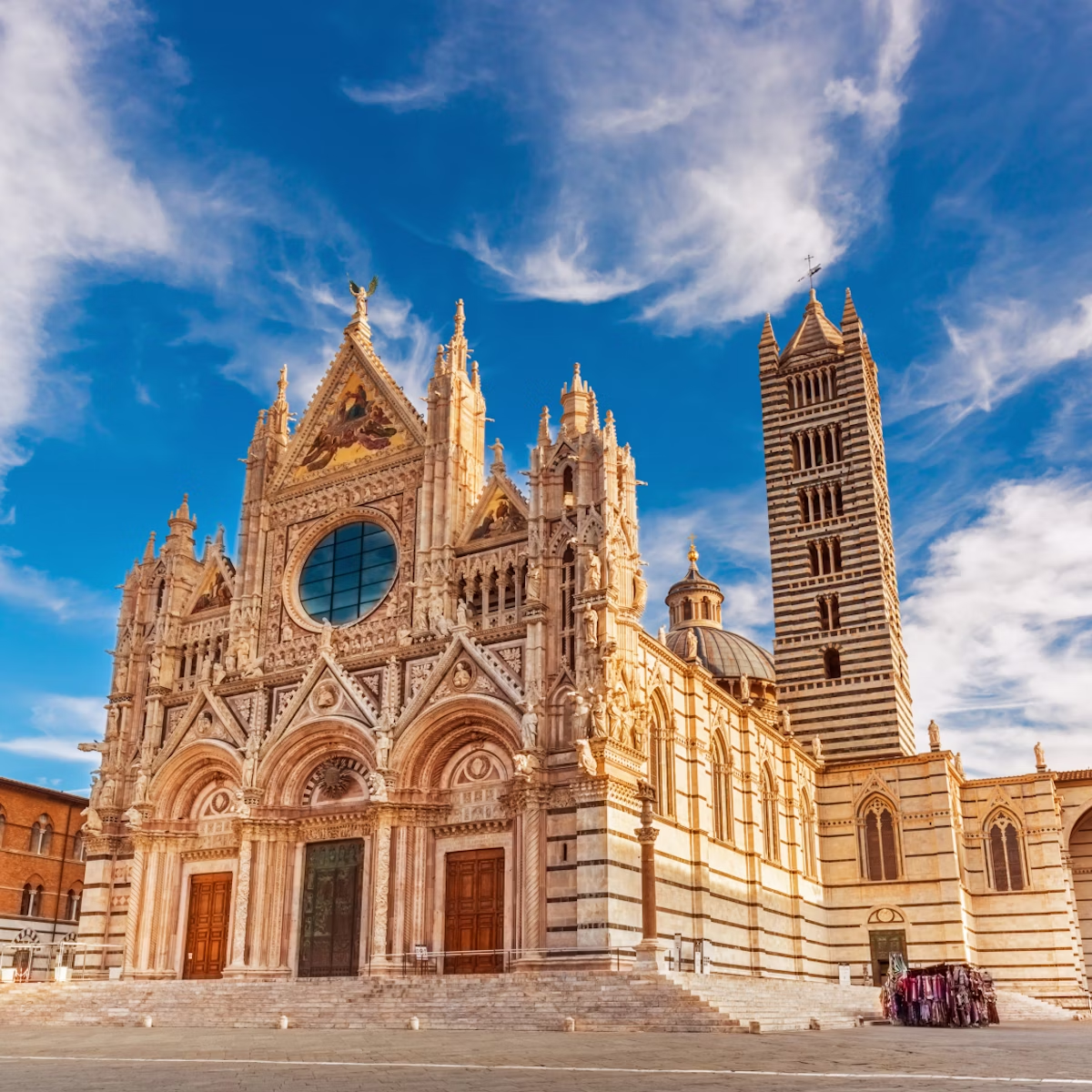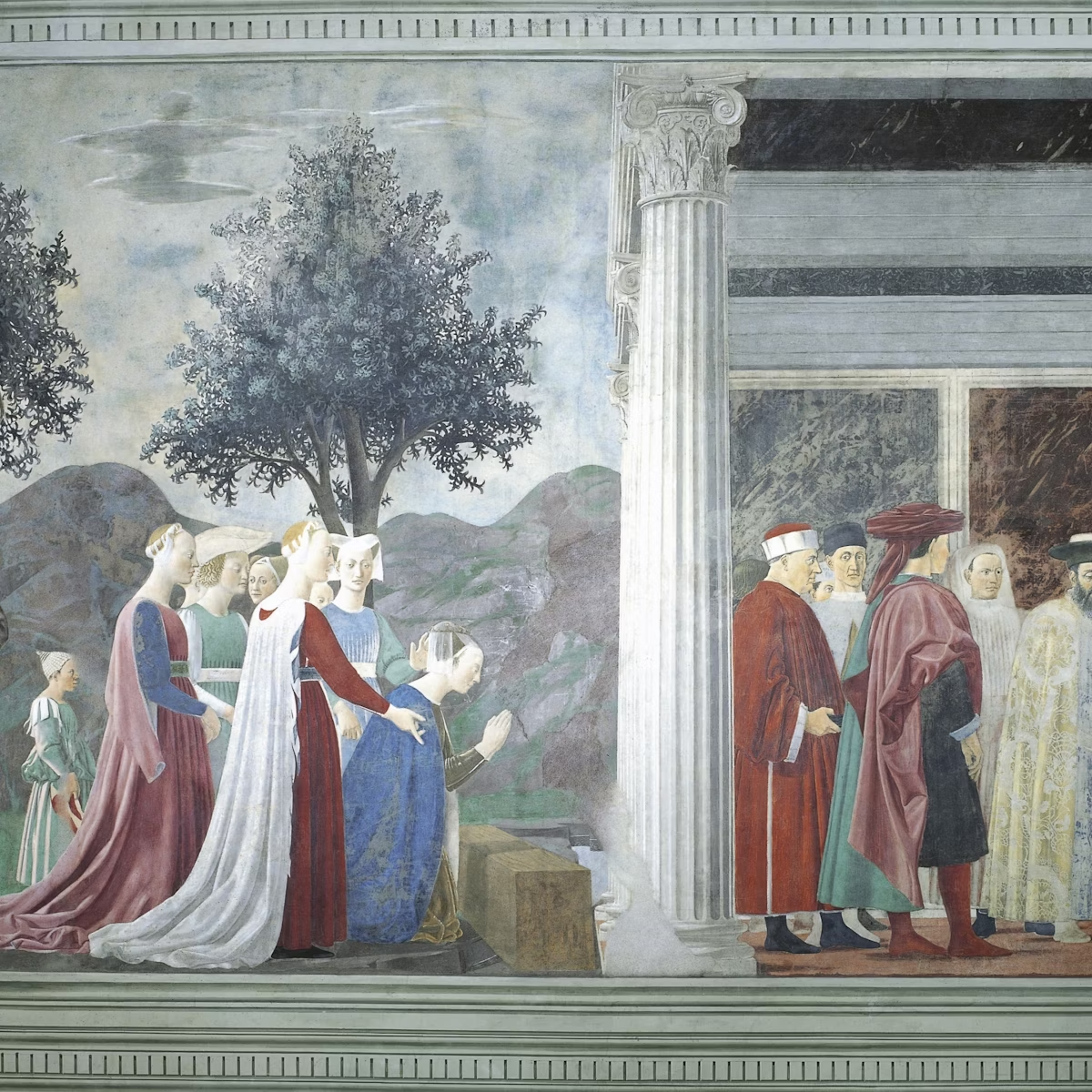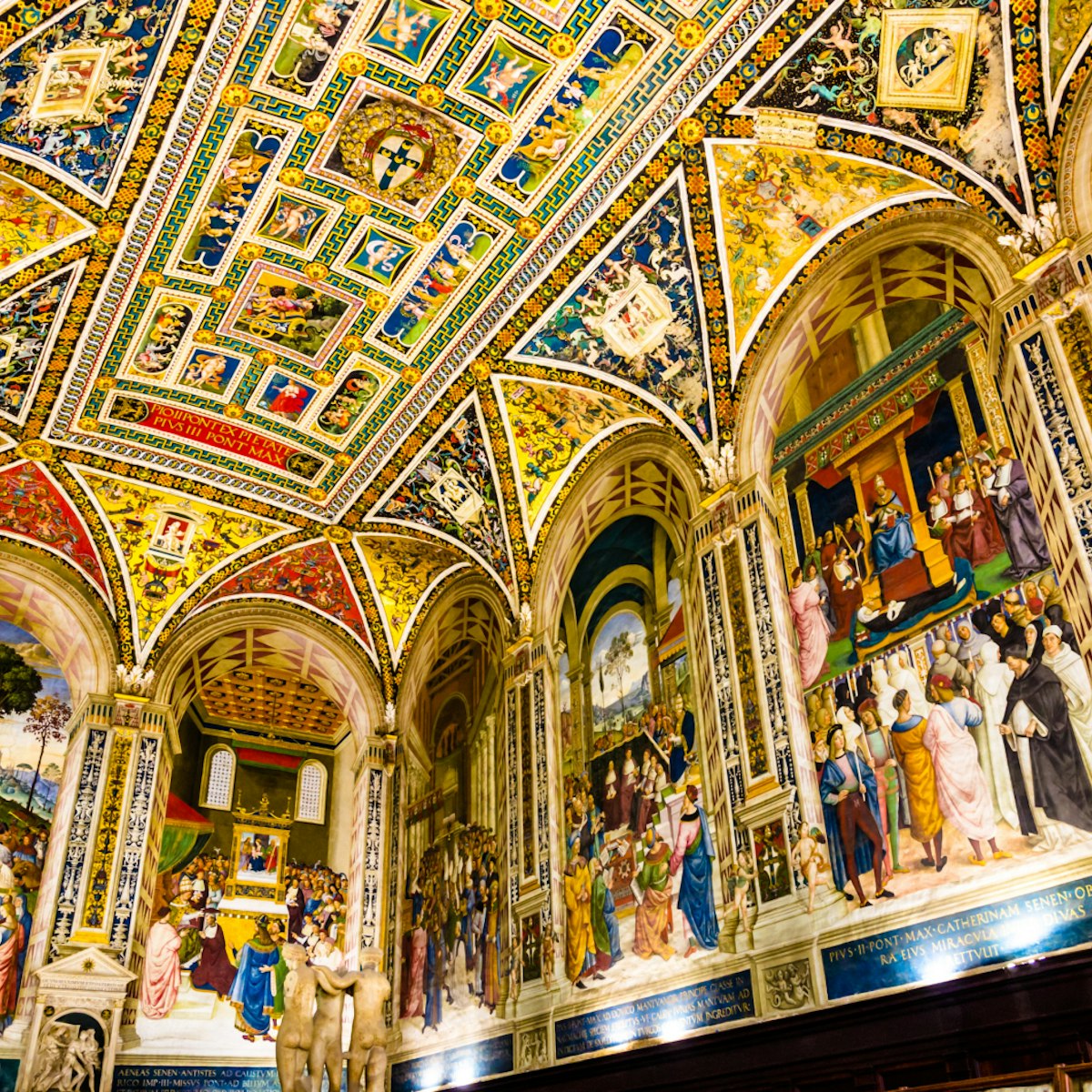Overlooking the remains of a Roman amphitheatre that once seated up to 10,000 spectators, this museum – named after Gaius Maecenas (68–8 BC), a patron of the arts and trusted advisor to Roman Emperor Augustus – exhibits Etruscan and Roman artefacts in a 14th-century convent building. The highlight is the Cratere di Euphronios, a 6th-century-BC Etruscan vase decorated with vivid scenes showing Hercules in battle.
Also of note is an exquisite tiny portrait of a bearded man from the second half of the 3rd century AD that was executed in chrysography, a method in which a fine sheet of gold is engraved then encased between two glass panes.
The museum is open occasionally on Sundays; call ahead to confirm dates and times.






